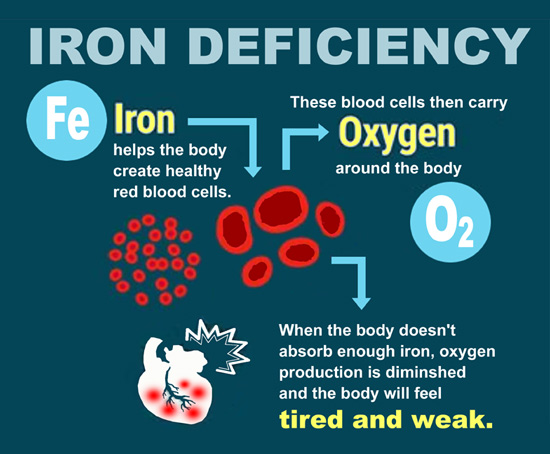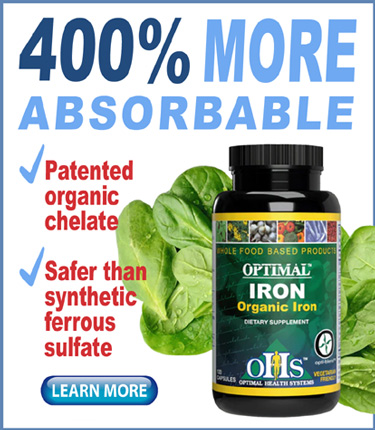Living in a world where new health products become available almost every week, it’s easy for consumers to forget about the more mundane aspects of health—like micronutrients.
Fortunately new studies provide gentle reminders and help keep us grounded in the basics.
One such reminder is a new German study that found about one in five athletes are iron deficient. And, according to the researchers, the deficiency is causing performance problems for many athletes.
The new study, which focused on older student athletes (average of 22), follows a similar 2019 study that focused on younger students (average age of 12) that came to similar conclusions.
Though iron deficiency is common among the general population, sports and strenuous exercise tax the body’s store of iron, making participants even more vulnerable to deficiencies. According to the researchers, iron demands of endurance athletes often exceed the recommended iron intake by 70% per day.
Micronutrients defined
Micronutrients are essential dietary compounds required by humans (and other organisms) in order to regulate the physiological functions of the body. The most common micronutrients are vitamins and minerals.
In human nutrition, micronutrient requirements are in “micro” amounts—generally less than 100 milligrams per day. On the other hand, the body needs macronutrients (carbohydrates, protein and fat) in amounts that are measured in grams per day.
According to the World Health Organization, Vitamin A, iron and zinc are the three most common micronutrient deficiencies in the world today. These deficiencies are not limited to third-world countries; they are also prevalent in the U.S. and other first-world countries.
Current study
The study, a retrospective analysis, was conducted using data collected on athletes who were treated at the department of sports medicine of the University Hospital Heidelberg. The analysis included 1,190 athletes of both sexes who were treated between April 2020 and October 2021.
DID YOU KNOW?
NSAIDs contribute to iron deficiency?
Studies show regular use of nonsteroidal anti-inflammatory drugs (NSAIDs), contributes to an increased risk of mucosal injury in the GI tract, resulting in bleeding.
If this bleeding continues regularly the blood loss will result in iron deficiency and even anemia.
One study, published in Osteoporosis International, concluded “Continuous and mild blood loss produced by NSAID enteropathy may result in iron deficiency and anemia.”
Follow this link for full study details.
The study also included a secondary analysis of data collected from a previously published study that examined blood pressure in athletes.
The researchers recorded that 19.7% of participants had an iron deficiency at baseline with and without mild anemia. This included a rate of more than 35% in the female athletes, and almost 11% in the male athletes.
Regarding gender-differences in females’ higher rates of iron deficiency versus the males, researchers posited two factors: iron loss via menstruation and lower iron intake in food preferences of females versus males.
The researchers also reported that younger athletes, in general, were associated with higher iron deficiency rates compared to older athletes.
Affect on athletic performance
Beyond tracking the high deficiency rates, the researchers also established a link between reduced athletic performance and low iron status. This was done by comparing Peak VO2 in deficient and non-deficient athletes.
(Peak VO2 is the highest level of oxygen consumption attained at peak exercise. It is used by scientists and trainers as the measurable value from a session of physical exercise.)
According to the researchers deficiency was “significantly related” to reduced athletic performance with “a lower percentage of athletes reaching VO2 peak of greater than 50 ml/min/kg.”
The consequences of iron deficiency in an athlete goes beyond the ability of the athlete to “catch their breath.” It’s actually a multi-faceted situation. The reduced oxygen availability results in more reliance on anaerobic metabolism. This increases lactate concentrations, reduces glycogen levels, lowers blood pH and results in earlier depletion of muscle glycogen.
Writing in the study’s conclusion, the German researchers placed much of the blame for widespread iron deficiencies on the fact that multi-national intake guidelines “do not consider the iron demands that exercise and sports require.”
“Awareness by sports medicine physicians regarding iron deficiency in athletes is still not sufficiently developed,” the researchers wrote. “While the Centers for Disease Control and Prevention in the United States recommended screening of all non-pregnant women for anemia every 5–10 years throughout their childbearing life-years, the National Athletic Trainers’ Association does not currently recommend anemia screening in asymptomatic athletes.”
The study was published online in August 2024 ahead of the October 2024 issue of Nutrition.
You can find the most absorbable form of iron—organic chelate—in Optimal Organic Iron from Optimal Health Systems. Click the banner ad on this page to learn more.
– – –
Source: Nutrition (ScienceDirect.com).


